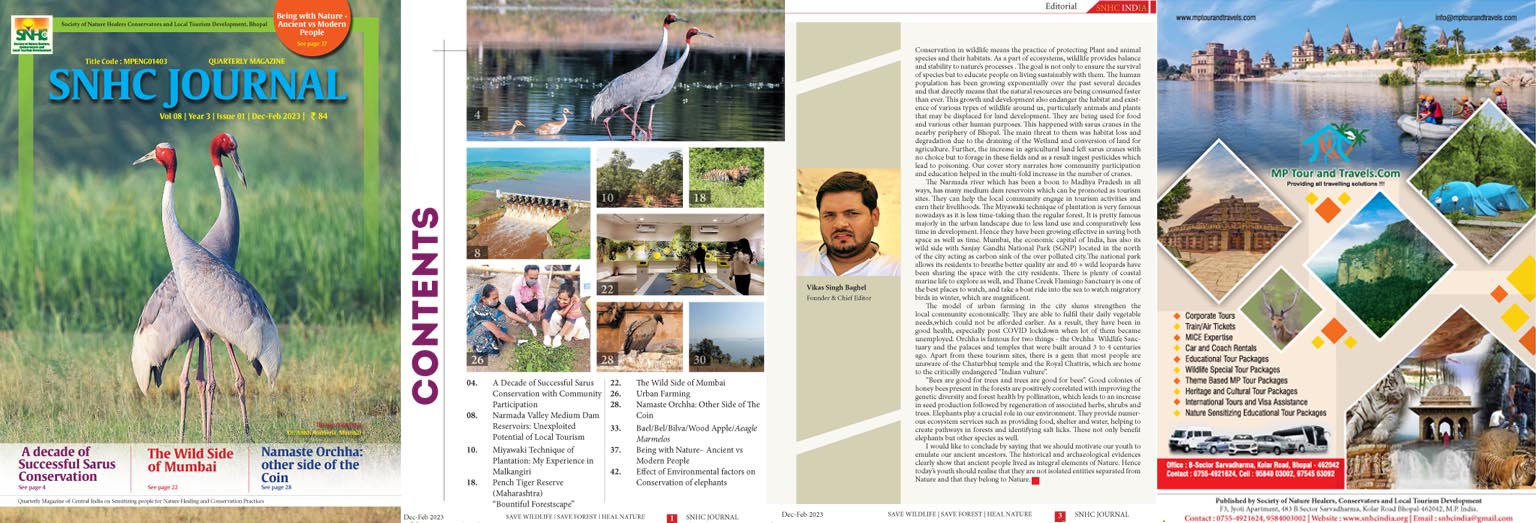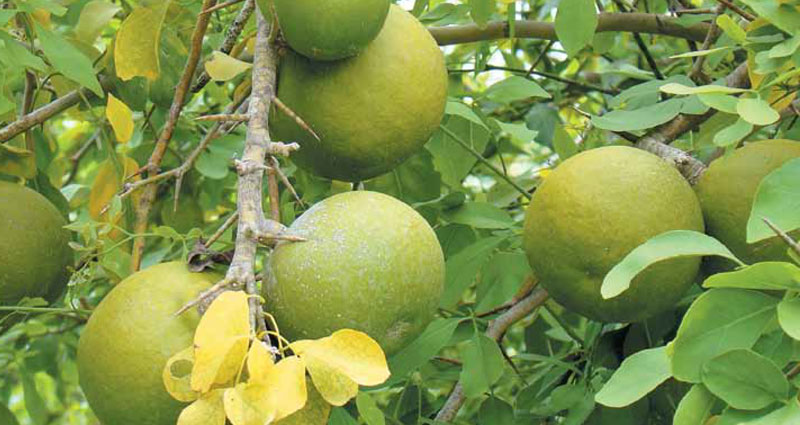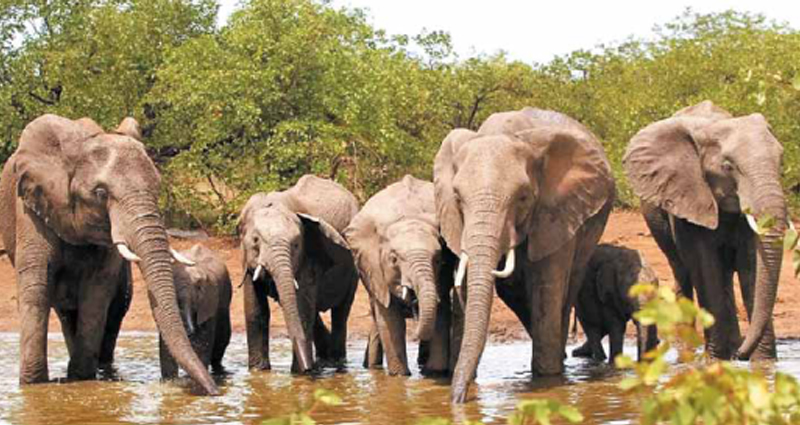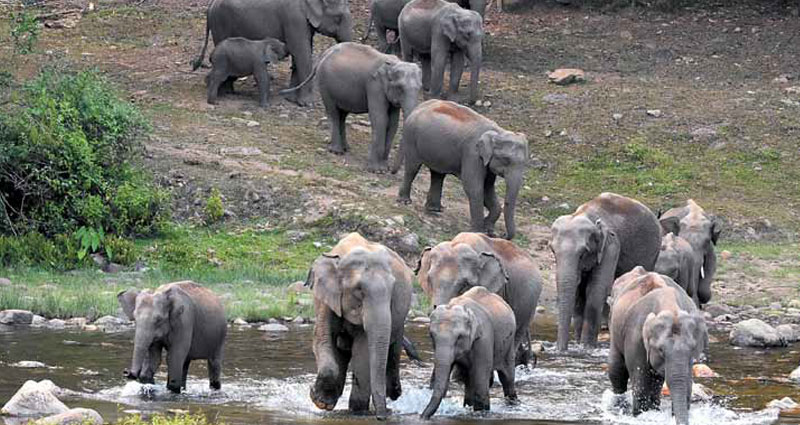
- A Decade of Successful Sarus Conservation with Community Participation
- Narmada Valley Medium Dam Reservoirs: Unexploited Potential of Local Tourism
- Miyawaki Technique of Plantation: My Experience in Malkangiri, Orissa
- Pench Tiger Reserve (Maharashtra) “Bountiful Forestscape”
- The Wild Side of Mumbai
- Urban Farming
- Namaste Orchha: Other Side Of The Coin
- A single Peepal tree acting as a building foundation stone for constructing multiple houses to Honeybees
- Bael/Bel/Bilva/Wood Apple/Aeagle marmelos
- Being with Nature – Ancient vs Modern People
- Anakulam (Elephant Pond) – A unique and enchanting reserve forest in the Western Ghats of Idukki District, Kerala
- Effect of Environmental factors on Conservation of Elephants
Conservation in wildlife means the practice of protecting Plant and animal species and their habitats. As a part of ecosystems, wildlife provides balance and stability to nature’s processes . The goal is not only to ensure the survival of species but to educate people on living sustainably with them. The human population has been growing exponentially over the past several decades and that directly means that the natural resources are being consumed faster than ever. This growth and development also endanger the habitat and existence of various types of wildlife around us, particularly animals and plants that may be displaced for land development. They are being used for food and various other human purposes. This happened with sarus cranes in the nearby periphery of Bhopal. The main threat to them was habitat loss and degradation due to the draining of the Wetland and conversion of land for agriculture. Further, the increase in agricultural land left sarus cranes with no choice but to forage in these fields and as a result ingest pesticides which lead to poisoning. Our cover story narrates how community participation and education helped in the multi-fold increase in the number of cranes.
Read More…
POSTED BY
admin

POSTED BY
admin

Effect of Environmental factors on Conservation of Elephants | By-Dr. Madhvee Dhairykar
POSTED BY
sail
- 1
- 2

